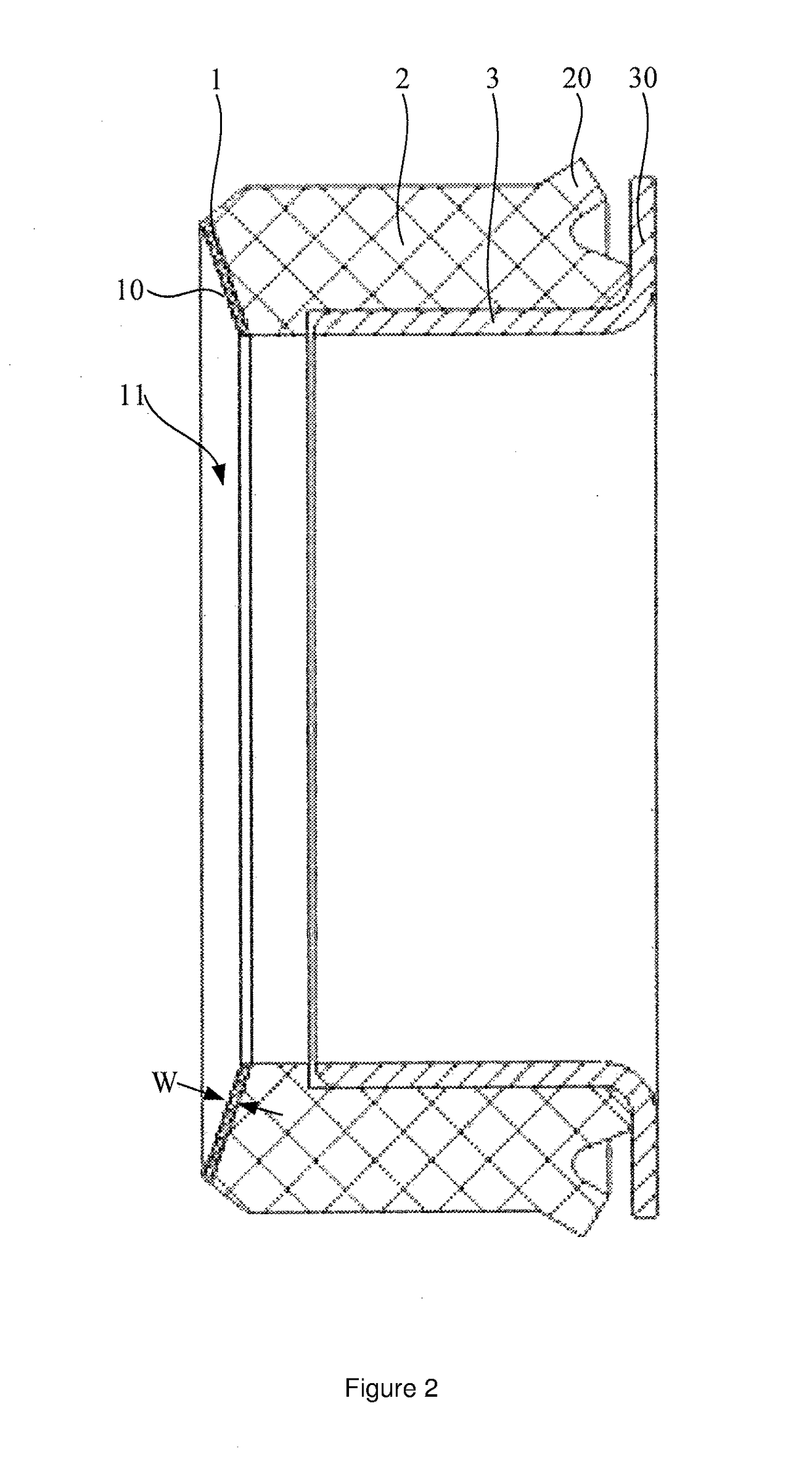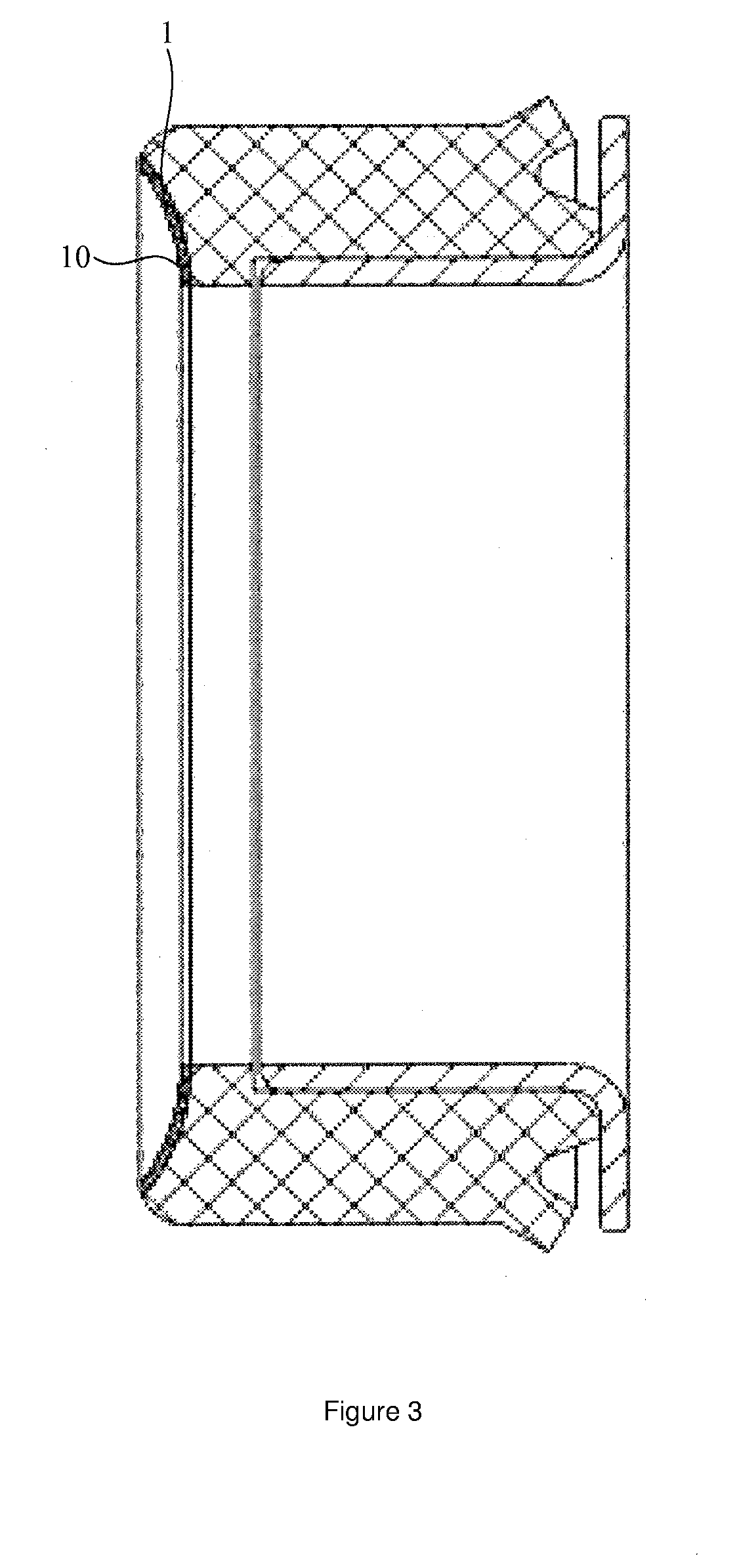Ball valve and sealing element for ball valve
- Summary
- Abstract
- Description
- Claims
- Application Information
AI Technical Summary
Benefits of technology
Problems solved by technology
Method used
Image
Examples
first embodiment
[0037]With reference to FIG. 1 to FIG. 2, this embodiment provides a sealing element for a ball valve. The sealing element comprises a first sealing ring 1 and a second sealing ring 2. The central axes (not shown) of the first sealing ring 1 and the second sealing ring 2 are parallel, and the first sealing ring and the second sealing ring are made of different materials. The first sealing ring 1 is located on a side of the second sealing ring 2 facing towards a ball 4 in the ball valve in an axial direction, and is used to make contact with a spherical surface 40 of the ball 4 to form a seal, so as to prevent a medium from leaking from the spherical surface 40 of the ball 4. In the technical solution of the invention, what is called the axial direction refers to the axial direction of the sealing element.
[0038]The first sealing ring 1 is a stamped annular PTFE (Polytetrafluoroethylene) sheet. That is, a stamping die is used to perform stamping processing on an annular PTFE raw mater...
second embodiment
[0052]The differences between the second embodiment and the first embodiment are as follows: As shown in FIG. 3, in the second embodiment, the sealing surface 10 of the first sealing ring 1 is a spherical surface whose curvature is equal to the curvature of the spherical surface of the ball (not shown). That is, the shape of the sealing surface 10 matches the shape of the spherical surface of the ball. When the sealing surface 10 is in pre-contact with the spherical surface, the entire sealing surface 10 makes contact with the spherical surface. The benefit of configuring the sealing surface 10 as a spherical surface is that after the sealing element is assembled on the ball valve, a relatively small pressing force in the axial direction may be applied to the sealing element. In this way, it can still be ensured that the sealing surface 10 stays in tight contact with the spherical surface. Because the pressing force is relatively small, the friction torque between the first sealing ...
third embodiment
[0053]The differences between the third embodiment and the first embodiment are as follows: as shown in FIG. 4, in the third embodiment, an annular concave cavity 14 surrounding a central axis O is arranged on one side of the first sealing ring 1 facing towards the ball 4 in an axial direction (only a part is schematically shown with a dotted line in the figure). The direction pointing from an axial end of the flaring opening enclosed by the sealing surface 10 to the other axial end is defined as an extending direction A. After the sealing element is assembled on the ball valve, partial portions of the first sealing ring 1 located on two sides of the annular concave cavity 14 in the extending direction A both make contact with the spherical surface 40, such that the annular concave cavity 14 and the spherical surface 40 enclose an annular sealing cavity. When leaking from one of the partial portions, the medium flows into the annular concave cavity 14, and as a result the pressure o...
PUM
 Login to View More
Login to View More Abstract
Description
Claims
Application Information
 Login to View More
Login to View More - R&D
- Intellectual Property
- Life Sciences
- Materials
- Tech Scout
- Unparalleled Data Quality
- Higher Quality Content
- 60% Fewer Hallucinations
Browse by: Latest US Patents, China's latest patents, Technical Efficacy Thesaurus, Application Domain, Technology Topic, Popular Technical Reports.
© 2025 PatSnap. All rights reserved.Legal|Privacy policy|Modern Slavery Act Transparency Statement|Sitemap|About US| Contact US: help@patsnap.com



